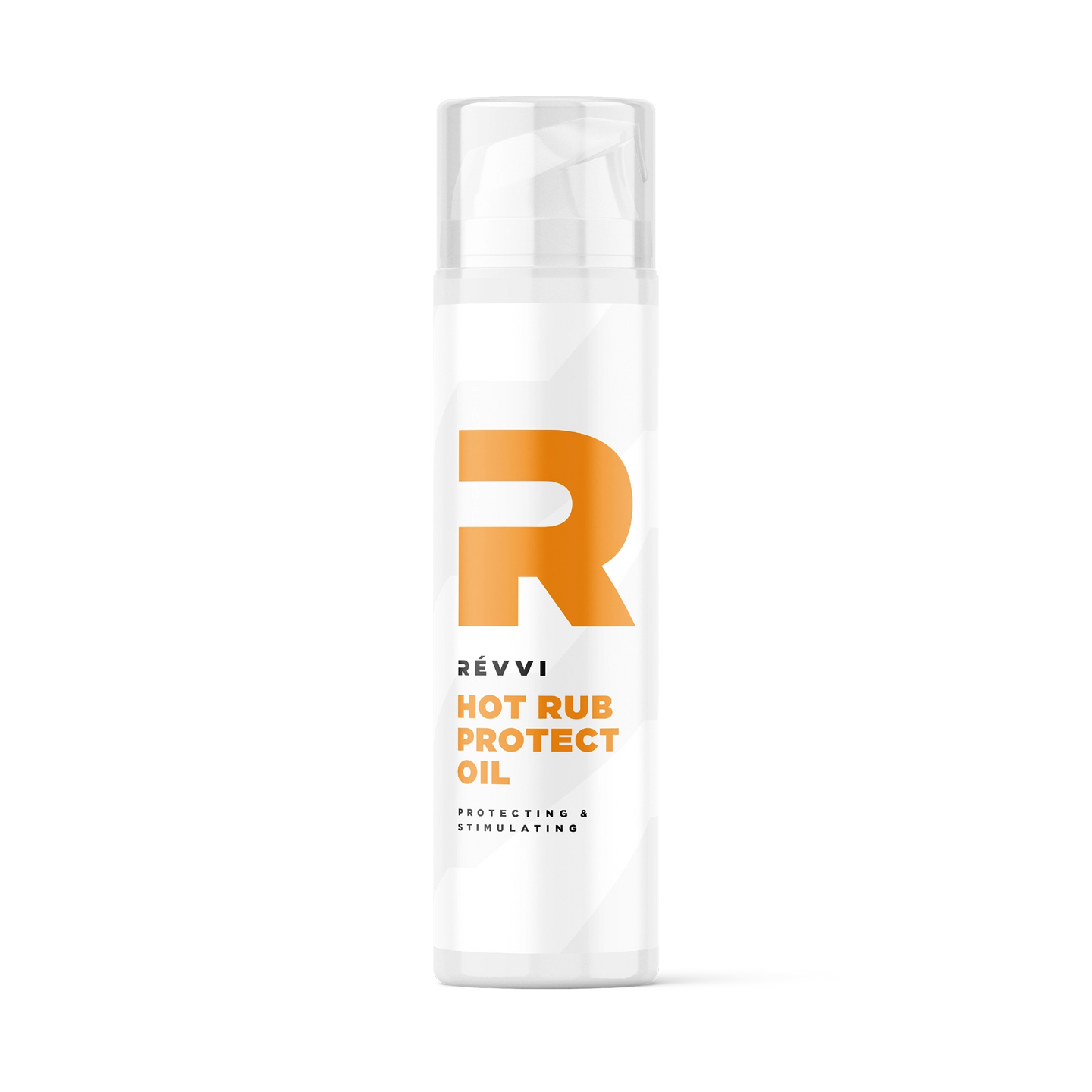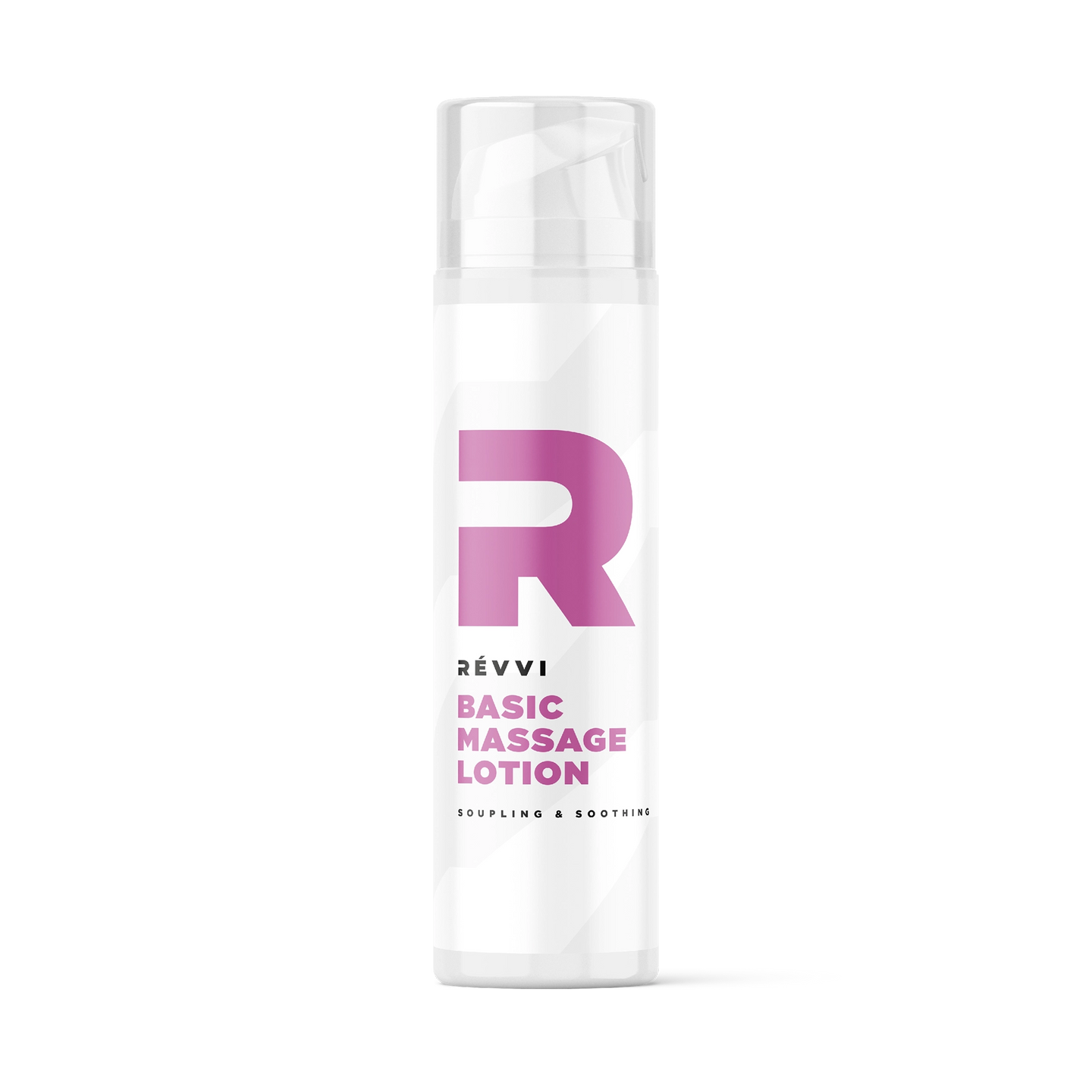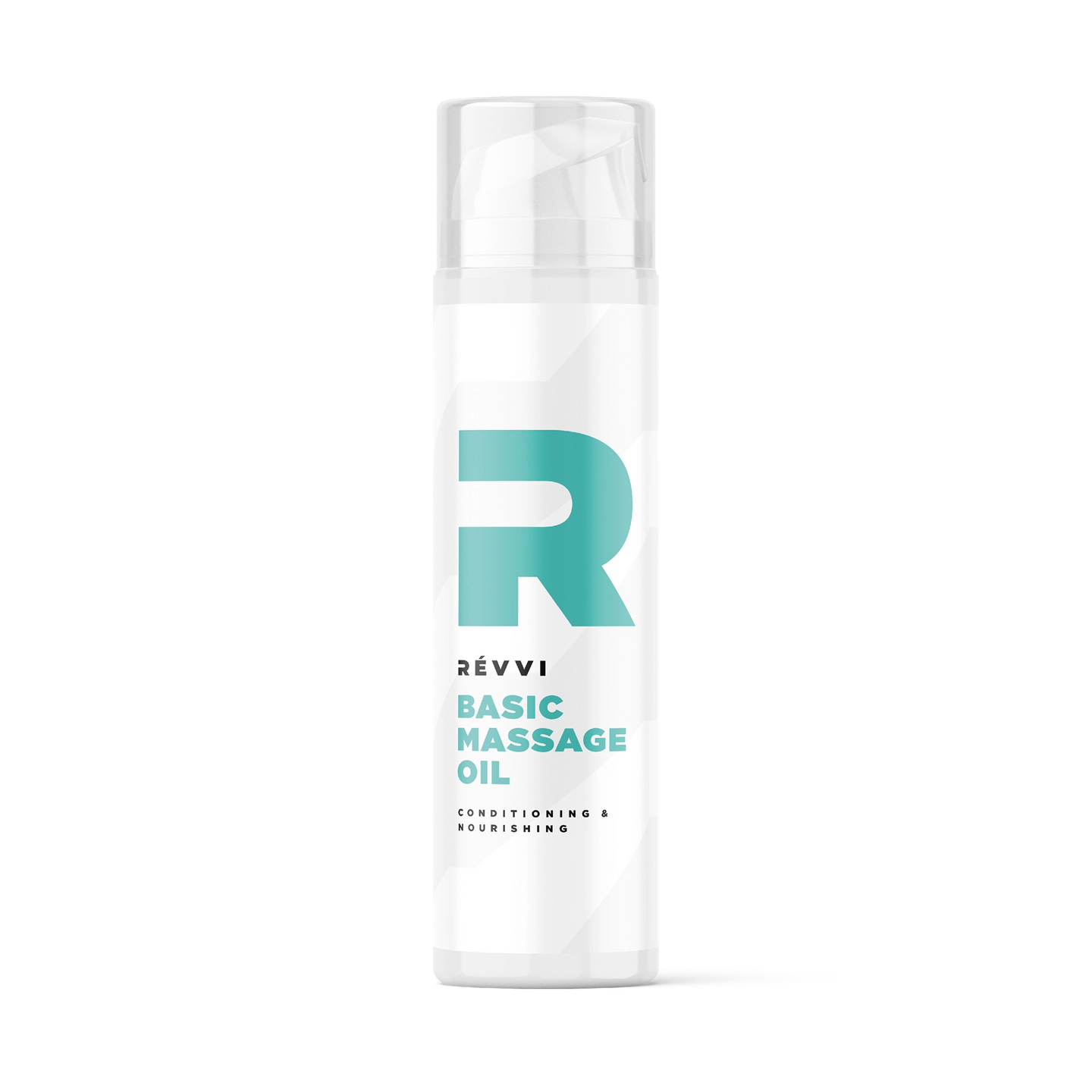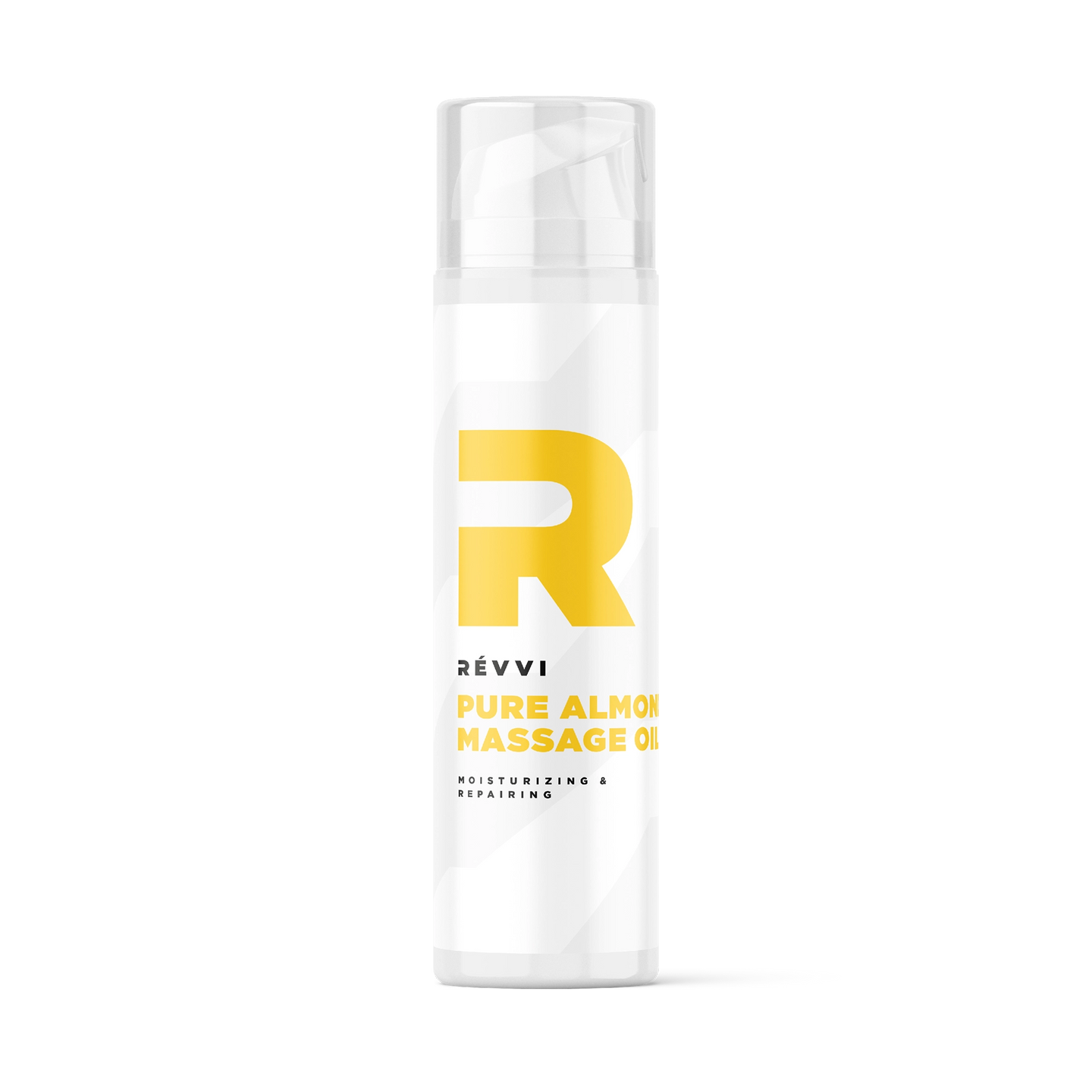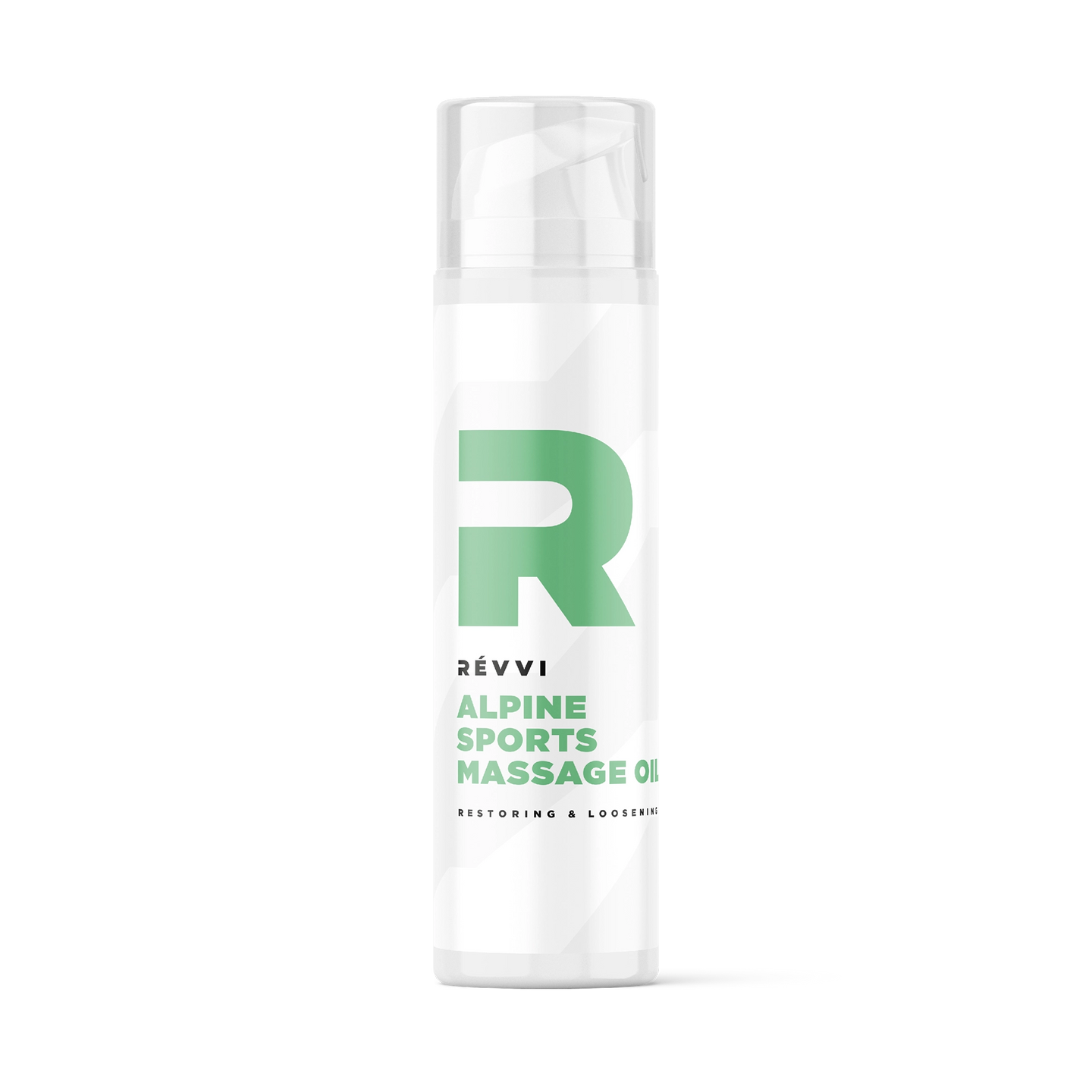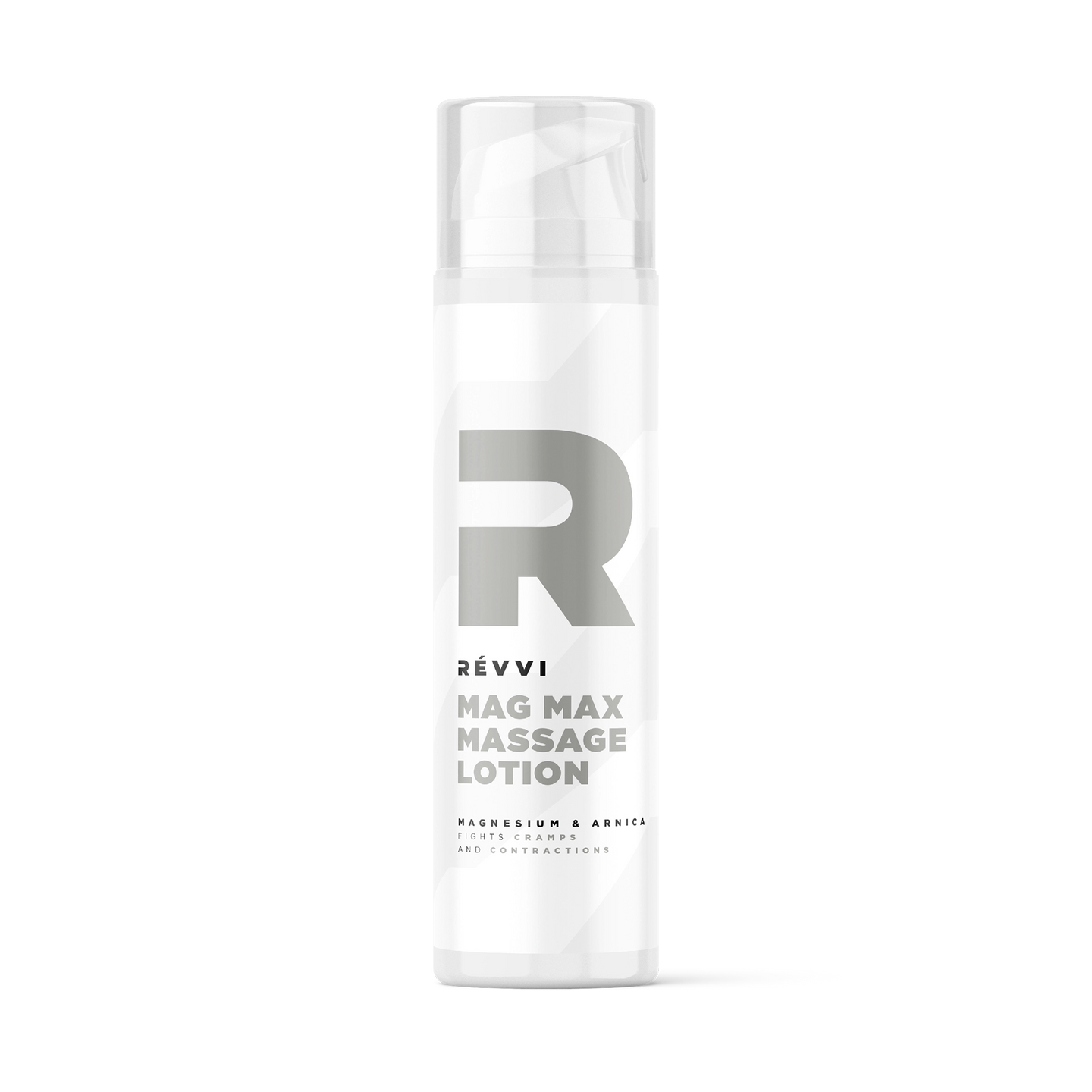
No athlete wants to get hurt. The smallest injury can affect performance, delay training and consequently miss a match or competition. When muscles are pushed to the limit during high intensity training, the risk of injury is greater. Especially for a recurring injury, there is a risk that it will develop into a chronic, permanent condition.
Massage therapy has come a long way, from wellness treatments to specialized therapies to specific sports massages. Recent research has shown that massage therapy is making significant advances in preventative medicine, such as preventing injuries in athletes.
Despite its name, this form of massage is not just for athletes, every individual can benefit from it!
A sports massage aims to prevent injuries, treat them and relieve pain. In the long term, it can help to deliver top performances because sports massage allows the body to function optimally.
After all, a sports massage has physical, mental and emotional benefits.
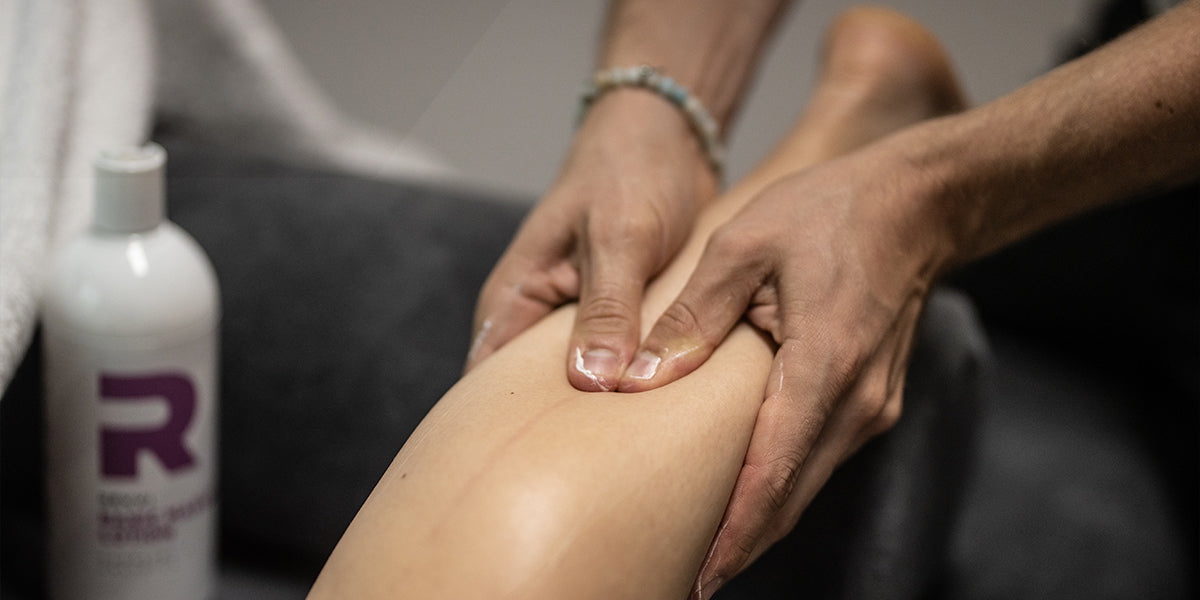
A sports massage not only supports muscle recovery and reduces the risk of injury, but also improves blood circulation and counteracts stress. It is a great way to reduce mental tension and relax completely after a hard workout. A good massage can restore mobility to injured muscle tissue and reduce fatigue.
During exercise, “micro-tears” are generated in the cells of the muscles that can lead to inflammation. (Sports) massages improve local blood flow to these areas, which improves the recovery process. Researchers (1) report that massage after intense exercise causes larger muscles that stimulate the growth of mitochondria (the “powerhouses” in our cells that convert nutrients into usable energy).
“Energy is EVERYTHING to an athlete and oxygen is EVERYTHING to the body.”
The same researchers report that deep massage after exercise increases mitochondrial counts more than when no massage was applied. Increased mitochondria can improve endurance by increasing the “transport rate” at which muscles use oxygen. In addition, the same study found that muscle mobility increases and recovery time between efforts decreases.
Ask a sports masseur what they think of sports massage and they will tell you it is fantastic! Ask a scientist the same question and they will tell you that the scientific benefits are still being researched.
What is certain is that massage is one of the best techniques for restoring tired muscles and for restoring Delayed Onset Muscle Soreness (DOMS); certainly when compared to cryotherapy, the use of compression garments and electro stimulation. (2 + 3)
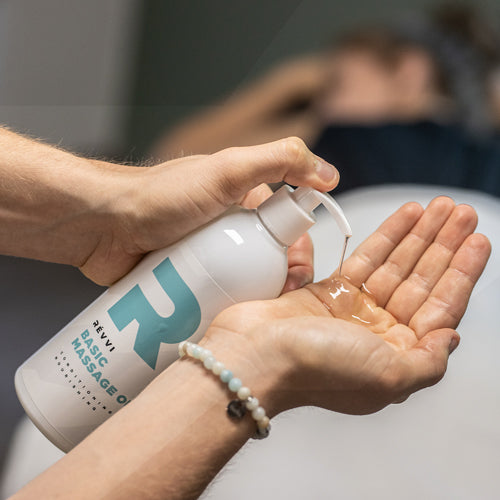
It is a misperception that a sports massage is synonymous with a deep tissue massage.
Sports massage is rather the umbrella term under which various techniques fall such as:
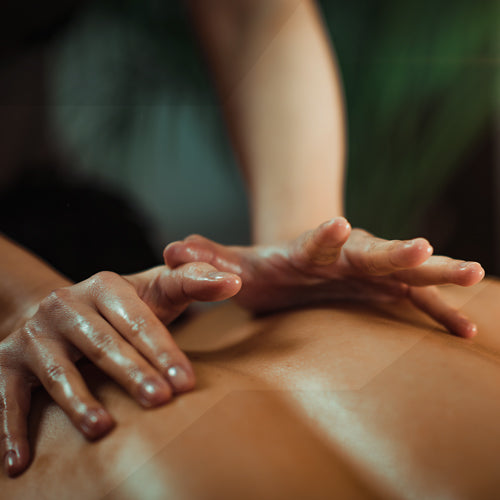
Intermittent technique in which the palm moves deep into the muscles to drive blood away from a specific area.
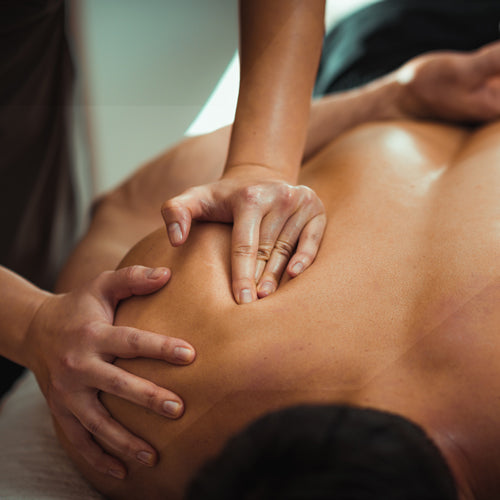
Kneading movements that put more pressure on the muscles and tissue and normalize muscle tension.
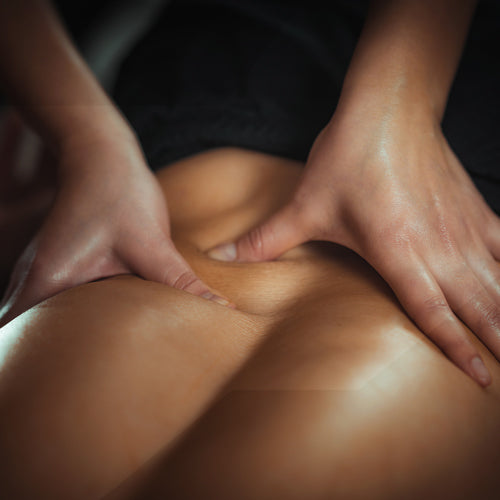
Friction techniques can be used to remove small muscle hardenings with constant pressure and to make the muscles supple again.
A massage does not necessarily have to be painful to be good! There is a fine line between pain and discomfort and it varies from person to person. Mild discomfort after a massage is acceptable. It may even reveal certain muscle weaknesses that require attention for strengthening. The discomfort should disappear after 48 hours. With a good massage, the body can even feel completely “new”.
RÉVVI INTENSE HOT MUSCLE GELS are chemical-free and have a unique composition of natural ingredients. The “vasodilating” properties have the main purpose of maximally and optimally restoring and/or protecting the affected area of the body.
The use of the INTENSE HOT MUSCLE GEL is highly recommended for the treatment of low to medium painful areas caused by chronic conditions (e.g. osteoarthritis, rheumatism or persistent back, neck and shoulder complaints) or for warming up muscles, tendons and joints during sports, for example.
During a massage, muscles receive the most attention, but many people report a feeling of pure relaxation, increased attention and an improved mood. (4) after receiving a massage. Athletes experience both physical and psychological benefits from a good sports massage.
Several studies by the American National Center for Biotechnology Information show that massage therapy (5):
• Lowers heart rate and blood pressure.
• Shortens recovery time after injury.
• Injuries (help) heal
• Reduces fears.
• Mood improves.
• Relieves muscle pain and tension.
• The healing of connective tissue accelerates, which promotes muscle flexibility.
• The cortisol level stabilizes (cortisol is a stress hormone, comparable to adrenaline).
• Blood flow throughout the body increases, transporting nutrients and oxygen throughout the body.
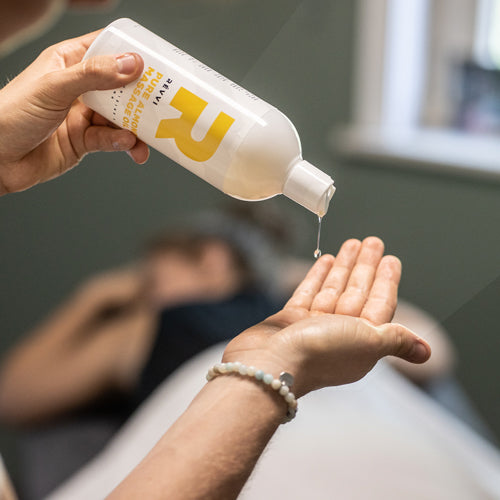
HOT RUB PROTECT OIL
BASIC MASSAGE LOTION
BASIC MASSAGE OIL
PURE ALMOND MASSAGE OIL
ALPINE SPORTSMASSAGE OIL
MAG MAX MASSAGE LOTION
(1) Rejuvenate Your Cells by Growing New Mitochondria
> VIEW SOURCE
(2) JE Hilbert, GA Sforzo, T Swensen PhD, Department of Exercise & Sport Sciences, Center for Health Sciences, Ithaca, NY 14850, USA
> VIEW SOURCE
(3) Wafa Douzi, Dimitri Theurot, Laurent Bosquet, and Benoit Dugué : An Evidence-Based Approach for Choosing Post-exercise Recovery Techniques to Reduce Markers of Muscle Damage, Soreness, Fatigue, and Inflammation
> VIEW SOURCE
(4) Jason Brummitt, MSPT, SCS, ATCa: The Role of Massage in Sports Performance and Rehabilitation. Current Evidence and Future Direction
> VIEW SOURCE
(5) Izreen Supa'at, Zaiton Zakaria, Oteh Maskon, Amilia Aminuddin, Nor Anita Megat Mohd Nordin : Effects of Swedish massage therapy on blood pressure, heart rate, and inflammatory markers in hypertensive women
> VIEW SOURCE
(6) Massage therapy can help improve sleep
> VIEW SOURCE

